From Siri to Sophia: A Journey Through the Evolution of AI
Introduction:
How important is safety to us? Can we imagine how safe we are, especially in real-life scenarios, if we seriously consider the word “safety”?
let’s take example of ‘ Self-driving cars’ also known as autonomous vehicles, equipped with sensors, cameras, and computer software that enable them to operate and navigate without human input. These vehicles are designed to sense their surroundings and make decisions based on that information, allowing them to drive themselves.
Safety is a crucial aspect of self-driving cars, as the technology must be reliable and capable of handling a wide range of driving scenarios and road conditions. The importance of safety is widely recognized, as it is fundamental to human well-being and quality of life.
Note:
According to the National Highway Traffic Safety Administration, 94% of car accidents are caused by human error. With self-driving cars, the goal is to eliminate human error and reduce the number of accidents on the road. The vehicles are equipped with a variety of sensors, cameras, and algorithms that allow them to navigate the road and avoid obstacles, reducing the risk of accidents.
But how do we get this information?
How these sensors, cameras and other data sources actually work?
How these algorithms and decision-making techniques actually work?
This happens with the advanced technology and achievements in a booming field of today’s time that deals with the development of algorithms and computer systems that can perform tasks that typically require human intelligence, such as visual perception, speech recognition, decision-making, and language translation. AI systems are designed to learn from data and can be trained to improve their performance over time, which is known as “artificial intelligence (AI)’.
What is Artificial Intelligence?
Artificial Intelligence (AI) is a branch of computer science that deals with the development of algorithms and computer systems that can perform tasks that typically require human intelligence. The goal of AI is to create systems that can understand, learn from, and interact with the environment in a way that resembles human intelligence.
Evolution of Artificial Intelligence:
The evolution of Artificial Intelligence (AI) has come a long way since its inception. From early rule-based systems to the latest deep learning algorithms, AI has undergone significant advancements, leading to the creation of increasingly sophisticated and human-like AI systems.
Early AI: The early days of AI research were focused on rule-based systems, where decision-making was based on a set of predefined rules. This approach was limited in its ability to handle complex situations and required extensive human input to function effectively.
Machine Learning: With the advent of faster computers and more sophisticated algorithms, AI researchers began to focus on machine learning, which allowed AI systems to learn from data and improve their performance over time.
Natural Language Processing (NLP): NLP is a branch of AI that deals with the interaction between computers and humans using natural language. With the rise of the internet and the increasing availability of large amounts of text data, NLP algorithms have become more advanced, allowing AI systems to understand and respond to human speech and text.
Computer Vision: Computer vision is a type of AI that deals with the interpretation and analysis of visual information, such as images and videos. With the advent of deep learning algorithms, computer vision systems have become more advanced, allowing AI systems to recognize and categorize objects in images and videos with increasing accuracy.
Robotics: Robotics is a field that deals with the design and development of robots and other physical systems that can perform tasks autonomously. With the advancement of AI, robotics has become more sophisticated, allowing robots to interact with their environment and perform complex tasks.
AI-powered Personal Assistants: AI-powered personal assistants, such as Siri and Alexa, have become increasingly popular, allowing users to interact with their devices using natural language commands. These systems have become more sophisticated over time, allowing them to perform a wider range of tasks, such as playing music, setting reminders, and answering questions.
AI-powered Social Robots: Social robots, such as Sophia, are a recent development in AI and are designed to interact with humans in a more natural and human-like manner. These robots use advanced NLP and computer vision algorithms to understand and respond to human speech and emotions.
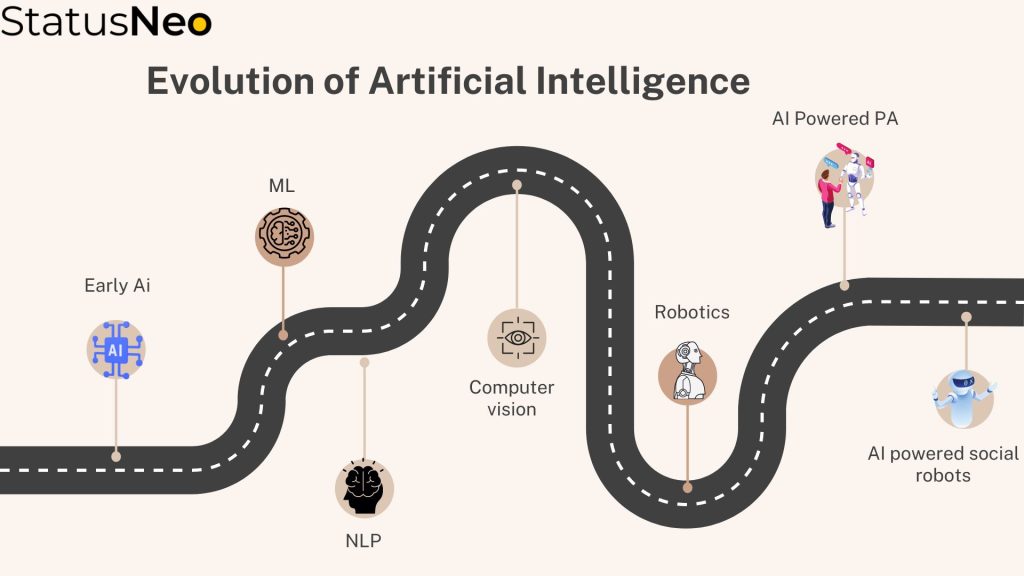
Rise of machine learning algorithms:
The rise of machine learning algorithms marked a significant turning point in the evolution of AI. Machine learning is a type of artificial intelligence that allows systems to learn from data and improve their performance over time without being explicitly programmed.
Machine learning algorithms have become the backbone of many AI systems due to their ability to learn from data and improve their performance over time. These algorithms have been instrumental in driving the development of AI and have been applied in a wide range of domains, including healthcare, finance, marketing, and more.
One of the key benefits of machine learning algorithms is that they can learn from vast amounts of data to perform various complex tasks:
- Image and speech recognition
- Natural language processing
- Making predictions and decisions
Let’s take examples of some of the industries now:
Healthcare sector:
People pay more attention to health in order to pursue a longer and more quality life. If you can have accurate expectations about your life, people may be able to better manage their own lives. Of course, this can also lead to some negative consequences. However, for doctors, if the patient’s life expectancy can be grasped, the patient can be better treated.
Example: Majority of the females are suffering from breast cancer and for that 95 % of the medical experts use machine learning algorithms to analyze CT scans of 48 breasts of adults over 60 years old in the database. By analyzing these image data, artificial intelligence algorithms predict the probability of these volunteers dying within five years. By comparing with the actual situation, the accuracy of this algorithm is close to 70%, which is comparable to the prediction accuracy of medical experts.
This is how ‘Artificial Intelligence’ is used in ‘Medical analysis and prediction of human life”.
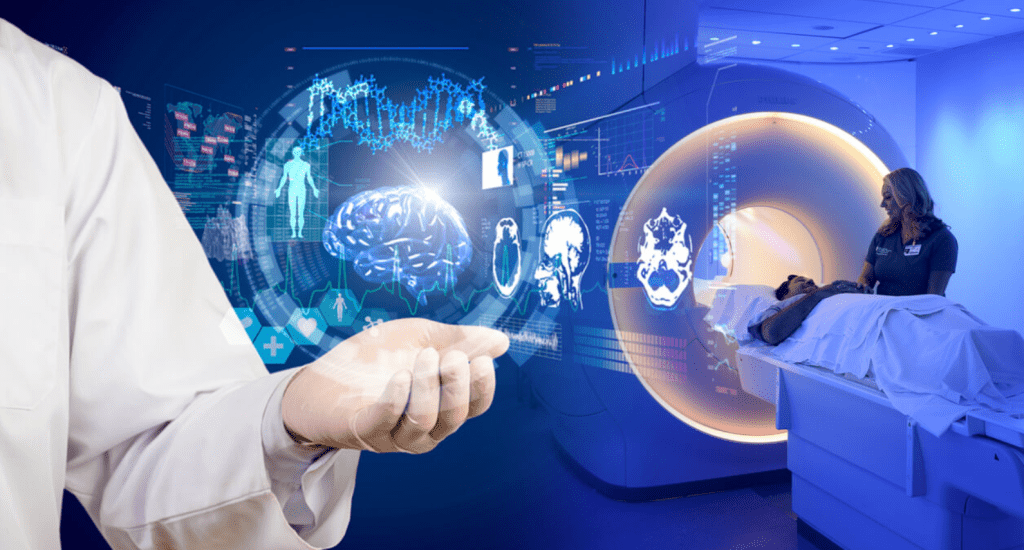
Finance Sector:
Machine learning algorithms are used for tasks such as fraud detection, risk management, and investment portfolio optimization. For example, machine learning algorithms can analyze vast amounts of transaction data to identify and prevent fraudulent activities.
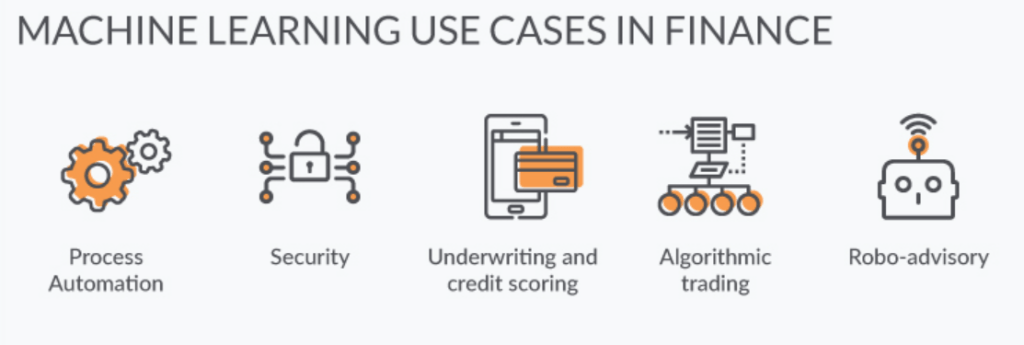
The emergence of virtual assistants:
Virtual assistants are software programs that can perform tasks and provide information to users through voice commands and natural language processing.
Siri:
Siri was one of the first virtual assistants to become popular and was introduced as a feature on the iPhone in 2011. Siri was capable of performing a wide range of tasks, such as setting reminders, making phone calls, and providing directions. Over time, Siri has become more advanced and can now answer a wide range of questions and perform more complex tasks.
Alexa:
Alexa, developed by Amazon, was introduced in 2014 and has become one of the most popular virtual assistants. Alexa is integrated with a wide range of devices, such as smart speakers, and can perform tasks such as playing music, setting reminders, and controlling smart home devices.
Google:
Google Assistant was introduced in 2016 and is integrated with the Google Home smart speaker and a wide range of Android devices. Google Assistant can perform tasks such as answering questions, playing music, and controlling smart home devices.
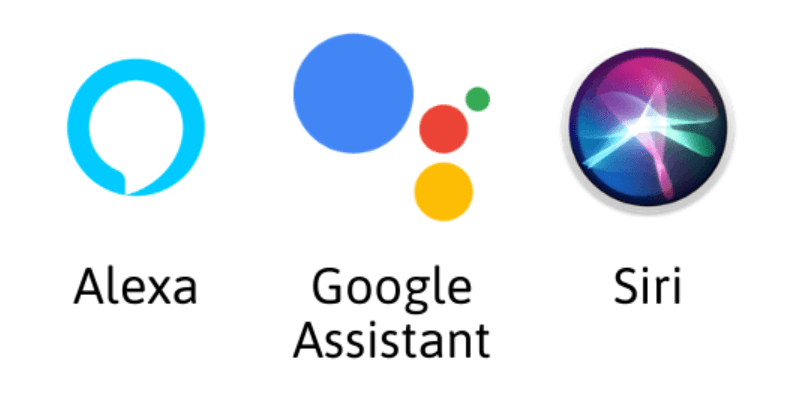
The advent of deep learning algorithms:
Deep learning algorithms are a type of machine learning algorithm that are inspired by the structure and function of the human brain. Deep learning algorithms are capable of learning from vast amounts of data and can be used to perform complex tasks, such as image and speech recognition, natural language processing, and making predictions and decisions.
There are some key areas where deep learning algorithms have been applied are as follows:
Self-driving cars:
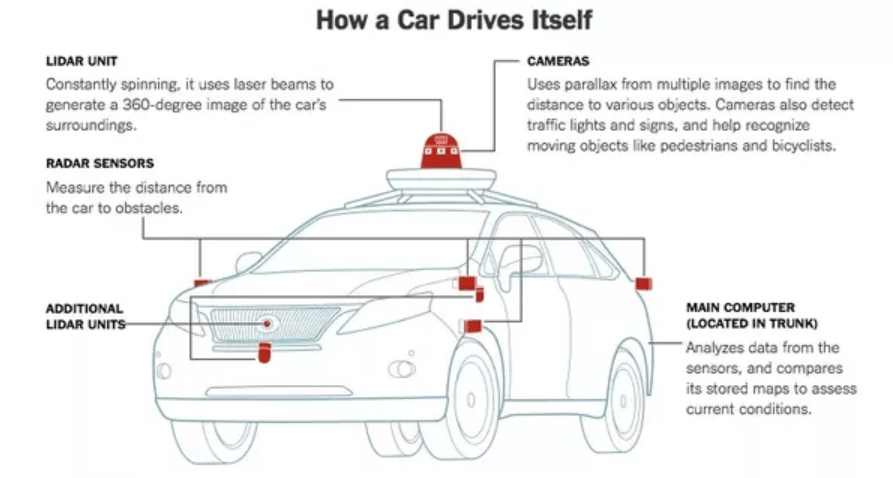
Deep learning algorithms can be used to analyze vast amounts of data from cameras, radar, and other sensors to help self-driving cars make decisions, such as recognizing traffic signs, pedestrians, and other objects on the road.
Speech recognition:

Deep learning algorithms can be used to analyze speech data and recognize speech patterns, which has led to significant improvements in the accuracy of speech recognition systems.
Language translation:

Deep learning algorithms can be used to analyze large amounts of data from multiple languages and learn to translate between languages. This has led to significant improvements in the accuracy of language translation systems and has made it easier for people to communicate with each other across different languages
Conclusion:
The future of AI and machine learning (ML) is full of exciting possibilities. As computing power increases and more data becomes available, AI and ML are expected to continue advancing, leading to more advanced systems that can perform complex tasks and have a greater impact on our lives and society. Key areas of growth in the future include healthcare and robotics. However, it is important to ensure that AI and ML are used in a responsible and ethical manner for the benefit of society.
Add Comment
You must be logged in to post a comment.









safemoon on binance
Thank you for your sharing. I am worried that I lack creative ideas. It is your article that makes me full of hope. Thank you. But, I have a question, can you help me?
Garima Bhatt
Thank you! Yea sure, I would be happy to answer your question.